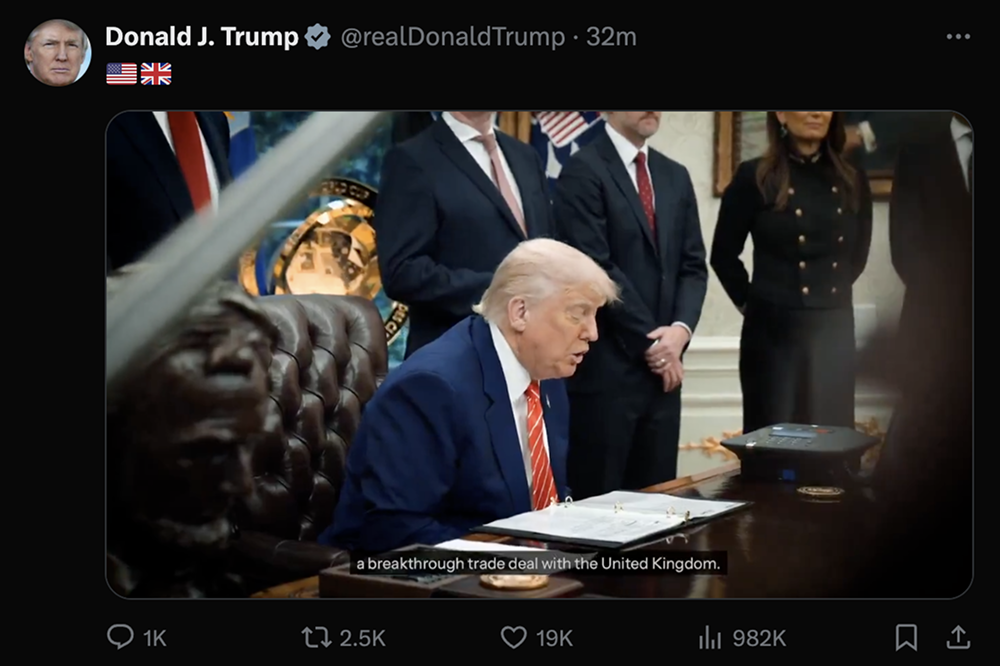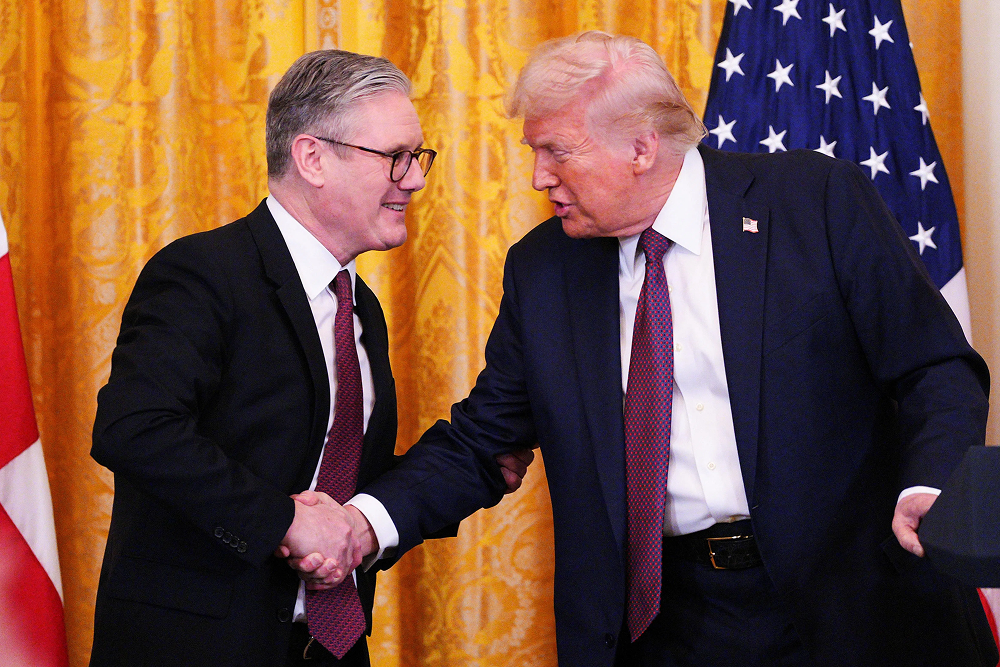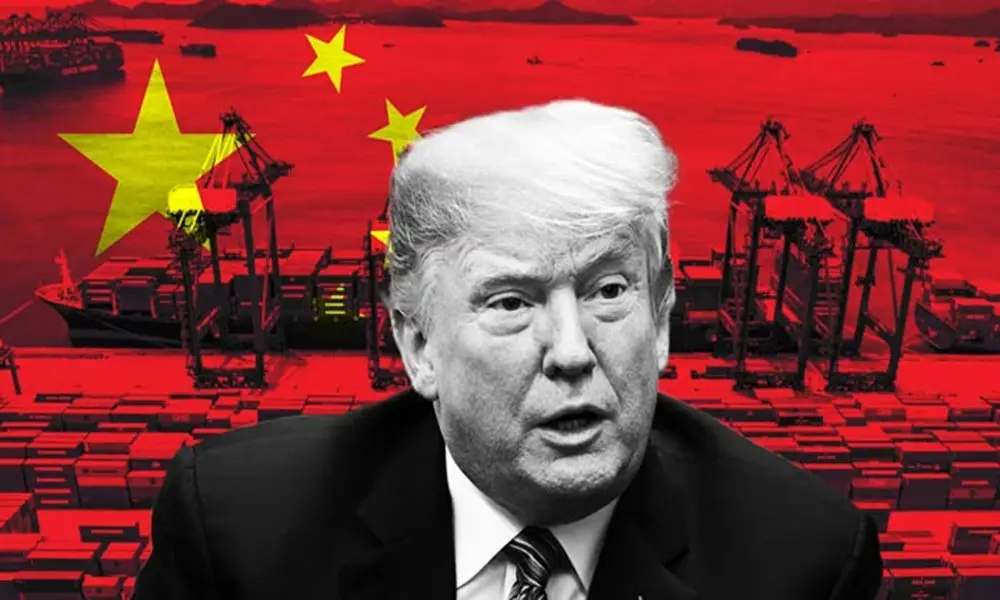On May 8, the United States and the United Kingdom officially finalized a bilateral trade agreement, with the U.S. maintaining a 10% tariff on British goods. Trump announced on the X platform that this agreement is "comprehensive and complete," and revealed that trade negotiations with multiple countries are underway. Fox Business reporter Charles Gasparino cited Wall Street executives, stating that the White House is planning similar agreements with countries like India, Japan, South Korea, and Australia, with tariff levels expected to be anchored at 10%. China is explicitly excluded from this "10% template," facing a starkly different high tariff barrier. Trump's "reciprocal tariff" policy is accelerating, and the fragmentation of the global trade landscape is beginning to show.

US-UK Agreement: The "Touchstone" of the 10% Tariff
The Wall Street Journal reported on May 9 that Trump and UK Prime Minister Starmer confirmed the framework of the US-UK trade agreement via a White House call. The U.S. maintains a 10% baseline tariff on British goods, while the UK reduces its tariff on U.S. goods from 5.1% to 1.8%, a decrease of 64%. X platform user @ChooLucia analyzed that this asymmetric adjustment means the UK "lost out" on tariff concessions, while the U.S. tariff increased from 3.4% to 10%, indicating that the Trump administration is also tough on allies. The UK's trade surplus with the U.S. is expected to reach $77.9 billion by 2024, and it originally hoped to negotiate a tariff exemption, but the retention of the 10% tariff indicates that the U.S. aims to set a "benchmark" for global trade negotiations.
The scope of the agreement has been criticized as "superficial." According to @ABCChinese on May 9, the agreement only involves a slight expansion of U.S. agricultural product access and a reduction in tariffs on British cars, without addressing the UK's strict standards on U.S. agricultural products or the U.S. non-tariff barriers on British cars. X user @apeuniverse_eth commented: "The UK traded a 10% tariff for a small sweetener in the car market; the Labour government is likely to face severe backlash domestically." Analysts believe that the US-UK agreement is more like a stepping stone for Trump to pave the way for subsequent negotiations with multiple countries, with the 10% tariff serving as a "touchstone" to test allies' bottom lines.

Multiple Country Negotiations: Expansion of the 10% Tariff Template
Fox reporter Gasparino revealed on May 8 on the X platform that the White House is intensively negotiating with countries like India, Japan, South Korea, and Australia to promote the 10% tariff framework. Wall Street sources confirmed that this strategy aims to solidify trade relations with allies through bilateral agreements while building momentum against China's high tariff policies. An analysis by Observer Network on May 8 indicated that Trump's negotiation priorities clearly lean towards "geostrategic allies," especially Asian countries that can counterbalance China.
The progress and resistance of negotiations among countries vary:
- India: The Modi government hopes to leverage the U.S.-China tariff war to promote "Make in India." However, Observer Network pointed out that opposition from Indian agricultural groups makes opening the agricultural market a "minefield" in negotiations. X user @TradeInsider stated that India may compromise in manufacturing but will find it difficult to resolve agricultural issues in the short term.
- Japan: Shigeru Ishiba promised to invest $1 trillion in the U.S., focusing on purchasing U.S. liquefied natural gas and agricultural products. The New York Times reported on May 8 that Japanese companies (like Suntory) are optimistic about reducing the 24% tariff, but Japan's rice protection policy and U.S. automotive certification barriers remain deadlocked.
- South Korea: Han Duck-soo instructed to accelerate negotiations to alleviate the 25% tariff pressure. South Korea may seek concessions by increasing U.S. energy purchases, but tariffs on the U.S. under the Korea-U.S. Free Trade Agreement are already near zero, leaving limited leverage.
- Australia: Albanese publicly expressed dissatisfaction with the 10% tariff, believing it contradicts the Australia-U.S. Free Trade Agreement. Observer Network stated that Australia prefers to resolve issues through negotiations rather than retaliatory tariffs, but progress is slow.
- The White House's "selective prioritization" strategy has sparked controversy. Observer Network cited sources stating that the Trump administration is currently only engaging in substantive negotiations with countries like India, South Korea, and Japan, while other countries are marginalized, highlighting geopolitical considerations.
China: The "Exception" Game Under High Tariffs
In stark contrast to the 10% tariff treatment for allies, China faces an exorbitant 145% tariff. According to BBC Chinese on May 7, Trump raised tariffs on China from 125% to 145% on April 9, causing significant market volatility. China's Ministry of Commerce responded by imposing a 34% tariff on U.S. goods, filing a lawsuit with the WTO, and restricting rare earth exports as countermeasures. Sino-U.S. negotiations are currently making slow progress in Switzerland, with minimal advancements.
Observer Network analyzed that Trump's policy towards China is not only about economic containment but also aims to weaken China's export competitiveness through high tariffs, pushing supply chains to shift to countries like India and Vietnam. However, X user @GlobalTradeX pointed out that the maturity of the industrial chain in countries like India is difficult to replace China in the short term, and the effectiveness of supply chain restructuring is questionable. High tariffs may also drive up U.S. prices, exacerbating inflationary pressures. The New York Times warned on May 8 that global trade volume could shrink by 1% due to tariff barriers, putting economic growth under pressure.

The Crossroads of Global Trade
The implementation of the US-UK agreement marks a phased victory for Trump's "reciprocal tariff" policy. X user @OrienteDawn believes that the rise of bilateral agreements may weaken multilateral mechanisms like the WTO, leading the global trade system towards "fragmentation." The New York Times predicts that the proliferation of the 10% tariff will drive up domestic prices in the U.S., posing downward risks to the global economy.
For China, high tariffs present both challenges and opportunities, potentially forcing industrial upgrades and expanding domestic demand. The "window of opportunity" for countries like India and Japan is limited by domestic policies and geopolitical complexities, making it difficult to shake China's position in the short term. Trump's "90-day negotiation window" has passed its halfway mark, and how countries balance concessions and interests in the ongoing game will determine the final landscape of global trade.
This article represents the author's personal views and does not reflect the stance or views of this platform. This article is for informational sharing only and does not constitute any investment advice to anyone.
Join our community to discuss this event
Official Telegram community: t.me/aicoincn
Chat room: Wealth Group
免责声明:本文章仅代表作者个人观点,不代表本平台的立场和观点。本文章仅供信息分享,不构成对任何人的任何投资建议。用户与作者之间的任何争议,与本平台无关。如网页中刊载的文章或图片涉及侵权,请提供相关的权利证明和身份证明发送邮件到support@aicoin.com,本平台相关工作人员将会进行核查。



